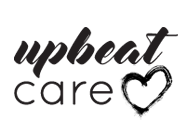Ingrown Toenails21 September 2017 | Admin An ingrown toenail develops when the sides of the toenail grow into the surrounding skin. The nail curls and pierces the skin, which becomes red, swollen and tender. The big toe is often affected, either on one or both sides. Other possible symptoms include:
Causes of ingrown toenails A number of things can cause an ingrown toenail to develop, including:
Treating ingrown toenails Without treatment, an ingrown toenail can become infected, so it’s important that you:
Surgery may be recommended if your toenail doesn't improve. Depending on the severity of your symptoms, this may involve either:
Partial nail avulsionPartial nail avulsion is a very effective and commonly used operation for treating ingrown toenails. A local anaesthetic is used to numb your toe and the edges of your toenail are cut away. A chemical called phenol is applied to the affected area to prevent the nail growing back and becoming ingrown in the future. A course of antibiotics may be prescribed if your nail is infected, and any pus will be drained away.
Preventing ingrown toenails Taking care of your feet will help prevent foot problems such as ingrown toenails. It’s important to cut your toenails properly (straight across, not at an angle or down the edges). Wash your feet every day, dry them thoroughly and use foot moisturiser. You can also use a foot file or pumice stone to remove hard or dead skin. Wearing shoes that fit properly will help to ensure your feet remain healthy. You should also change your socks (or tights) every day. Visit your GP or a podiatrist as soon as possible if you develop problems with your feet. |









